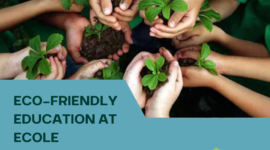Proficiency-Based Learning is relatively a new model of examining as it aims at the advancement of students only on the basis of their mastery of knowledge in the content they are studying rather than age, seat time, grades, and many other factors. This type of approach forces students to take responsibility for their education and start focusing on learning and mastering the content and demonstrating the knowledge. In proficiency-based learning assignments or lessons that are provided are valuable and meaningful and full educational support is given to students according to their needs and abilities and once students successfully demonstrate mastery in the content they are promoted to the next content.
On the other hand, it is completely different from the traditional way of learning model which is extremely popular among educational institutions as it focuses on marks obtained, seat time, age, behavior, and many other factors while deciding the progress of the students but the problem with this model is Students don’t take responsibility of their education their main objective is to get good grades either by cheating or rote learning so the knowledge retention is the bare minimum in this model and the assignment are considered meaningless and students think of it as an extra burden.Schools in Dehradun implement this proficiency-based learning model into their academics for examining students’ performance.
This is the reason why many educational institutions are shifting from traditional learning to proficiency-based learning as the duty of educational institutions is to provide quality education and create an environment that supports knowledge retention rather than solely focus on grades and seat time as a factor of progress. This will help students to become knowledgeable and this knowledge will help them in becoming successful in their career ahead.
Strategies of Proficiency-Based Learning for Classroom
Shifting from traditional ways of learning to proficiency-based learning can be overwhelming but with the right strategies, Teachers can make this transition smooth.
-
Provide choices to students –
Teachers should offer students curriculum menus and choice boards by which students will take ownership of their education and they will also have the power to choose the learning style that best fits their interest and style as the objective is to gain knowledge and showcase mastery in the lesson.
-
Asking Students –
This is the simple way to understand the preferences of students by asking them how and what they would like to learn, for this they can take the help of a survey.
-
Using Technology –
Provide all the technology to students that enhance their learning ability for example media technology, digital tools this will help students to use technology to better understand and demonstrate their knowledge.
-
Use practical assessments –
Teachers should use assessments that showcase real-world problems and this will help students to use their existing knowledge to work toward solutions to real-world problems.
-
Set Targets –
Teachers should give learning targets to students so that they can stay focused on the main goal which is to gain knowledge and progress through demonstration of the knowledge.
Benefits of Proficiency-Based Learning
1- Enhance Engagement
When students have the choice to learn using any methods according to their learning style will enhance the level of engagement as the students gets the freedom to study at their own pace additionally the students finds their learning meaningful as they learning to gain knowledge and use that knowledge to progress this will prevents students from becoming bored or find the education overwhelming.
2 – Skill-based Assessment
Assessment in proficiency-based learning is totally skill-based as they are lessons designed around the skills which are needed to showcase mastery in content. Students’ assessments are mostly related to real-world problems so it helps students to gain real-world skills like developing critical thinking, problem-solving skills, creativity, communication skills, etc.
3 – Affordable
Proficiency-based learning gives the power and control in students’ hands so it totally depends on students how much time they take in order to get promoted so if students take less time in the promotion. The faster a student progresses through the material or content, the less expensive the program will be for students.
4 – Self- Paced
The control of the education is in students hand and they can take their time while studying as every student is different some students take more time in understanding concepts while some students take minutes to understand so it gives both the students freedom to move forward at their own pace as the goals is to gain knowledge and showcase mastery in the content.









